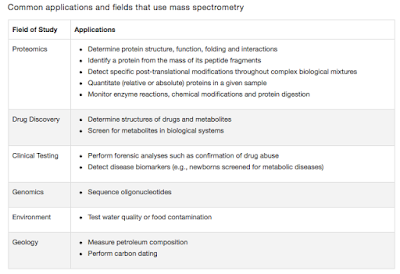Mitochondria participates actively in Phagocytosis.
Greetings
Anyone who has studied biology knows about the process of phagocytosis. Phagocytosis, is a process by which a cell engulfs other cells or particles. In context with immune system, phagocyosis is an important mechanism in defense against many different microbes. In fact, the mechanism is so important that several pathogenic microbes have evolved and acquired specialised mechanism to evade killing by phagoctyosis.
 |
| Fig 1: Mechanisms of escaping Phagocytic killing by Microbes. Source |
There are basically two broad mechanisms of surviving phagocytosis. First, the microbe can completly evade being phagocytosed for example by using a capsule (Ex: S pneumoniae). Second, after being phagocytosed the microbe can survive being ripped off inside the phagosome either by inhibiting phagosome lysosome fusion (Ex: M tuberculosis), surviving inside phagolysosome (Ex: Coxiella burnetii) or escape from phagosome (Ex: Shigella species). Some microbes can even produce toxins that directly attack phagocytic cells (Ex: Leukocidins by S aureus). Figure 1 is a summary of microbial tools that allows escape from being killed by phagocytosis.
Though the exact details of phagocytic killing vary, the prinicple is pretty much the same globally. For example, the WBC first attaches the bacteria to its cell wall through a receptor and then internalises the bacteria inside a vacuole (Phagosome). The phagosome then attaches with a lysosome which consists of several enzymes to form a phagolysosome. This process is called as maturation. Simultaneously, the phagolysosome is acidifed by the multi-subunit vacuolar ATPase (V-ATPase), which pumps hydrogen ions into the lysosomal compartment that activates the degradative enzymes of the lysosome. The internal of phagolysosome contains enzymes such as nucleases, proteases, lipases, glucosidase etc which aids in digestion of its content. Figure 2, provides the major steps involved in phagocytosis and autophagy.
 |
| Fig 2: Major steps in phagocytosis and autophagy. Source |
In classic textbook case scenario, mitochondria doesnt appear in the scene. In 2011, researchers showed experimental evidence indicating that the activation of Toll like receptors- TLR1, TLR2 and TLR4 lead to recruitment of mitochondria to macrophage phagosomes and enhanced mitochondrial Reactive oxygen species (ROS) production. Subsequently a detailed work in 2015 by another group (lead by Mary O'Riordan) discovered that inositol-requiring enzyme 1α (IRE1α), a protein from endoplasmic reticulum was an important factor in phagocytosis killing. Further analysis using ROS tracker chloromethyl 2',7'-dichlorodihydrofluorescein diacetate showed that in a normally functioning macrophage ROS migrated from mitochondria to the phagosome to achieve an effective killing. Most probably the process of engulfment turns on the stress signal which leads to mitochondrial synthesis of mROS (mitochondrial ROS), packed and sent into the phagosome.
 |
| Figure 3: MDVs delivers mROS to the phagosome. Source |
Most recently, this understanding has been further explored by Mary O'Riordan and her team. The study followed up the previous findings indicating that the TLR dependent IRE1α induced mitochondrial ROS (mostly mitochondrial hydrogen peroxide) that are delivered to phagosomes via mitochondria derived vesicles (MDVs). This study basically identified Sod2 as a key enzyme involved in mH2O2 production in a TLR dependent mechanism. The pathway was also demonstrated to be operational via Parkin/Pink1-dependent mitochondrial stress pathway.
Abuaita (the first author of the paper) comments, "We discovered that macrophages sense invading MRSA and turn on the machinery to increase mitochondrial development of ROS". O'Riordan who has been working on the role of mitochondria in enhancing phagosome function comments on the published study, "ROS are also damaging to our own cells, so we hypothesized that there must be some delivery mechanism. Mitochondria have not traditionally been known to package and deliver substances to different parts of the cell. The immune system is full of redundancies. It has to, by definition; every bacteria, virus, or parasite that we know is a pathogen is one because it has evolved ways to avoid the immune system. The immune system also has a real diversity of purpose and mechanism. Being open to different ways of asking questions about the immune system and understanding the biology of these pathogens helped us to find the right experimental system to use."
References:
Smith LM, May RC. Mechanisms of microbial escape from phagocyte killing. Biochem Soc Trans. 2013 Apr;41(2):475-90. Link
Richards DM, Endres RG. The mechanism of phagocytosis: two stages of engulfment. Biophys J. 2014 Oct 7;107(7):1542-53. Link
West AP, Brodsky IE, Rahner C, Woo DK, Erdjument-Bromage H, Tempst P, Walsh MC, Choi Y, Shadel GS, Ghosh S. TLR signalling augments macrophage bactericidal activity through mitochondrial ROS. Nature. 2011 Apr 28;472(7344):476-80. Link
Abuaita BH, Schultz TL, O'Riordan MX. Mitochondria-Derived Vesicles Deliver Antimicrobial Reactive Oxygen Species to Control Phagosome-Localized Staphylococcus aureus. Cell Host Microbe. 2018 Nov 14;24(5):625-636.e5. Link





Comments
Post a Comment